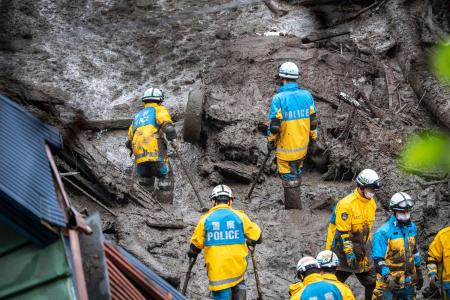
- ARAB NEWS
- 01 Aug 2025

Khaldon Azhari
TOKYO: Experts have said the sudden and catastrophic landslide in the resort town of Atami on Saturday, which left several people dead, was not a surprise.
The landslide in the seaside town of Atami, 100 km to the southwest of Tokyo, has claimed two lives, while three people were injured, and over 130 homes were destroyed after three days of heavy rainfall.
Experts say it has long been understood that there is a severe risk of landslide disasters at the location of the present disaster.
Professor Toshitaka Kamai of Kyoto University’s Disaster Prevention Laboratory told the Mainichi Shimbun, the soil of the area around Atami, including the disaster site, is soft and unstable and deposited on precarious topography. Atami, a famous hot-spring resort, is built on a steep mountainside that drops toward the sea.
Substantial debris flows have occurred every few hundred years, meaning there was always a risk of a major landslide occurring at any time. Recently, some of the lands were opened up for residential development, exacerbating the risks.
Landslides in nearby Odawara City triggered by the Great Kanto Earthquake of 1923 killed more than 400 people.
Yuki Matsushi, an associate professor of hydrography at the Shizuoka University Disaster Prevention Center, commented: “Debris flows tend to occur a few hours after peak rainfall, which is common in sedimentary topographies with a lot of volcanic rock in the soil. The slope of yesterday’s landslide is steep, the debris flows downward in a straight line, and these combined negative factors end up amplifying each other, making the disaster worse. Plus, the rain on the first day dampens the ground so that a significantly smaller rainfall may trigger collapse on subsequent days.”
From the above factors, Professor Kamai indicated, “This disaster cannot be said to have been unexpected.”